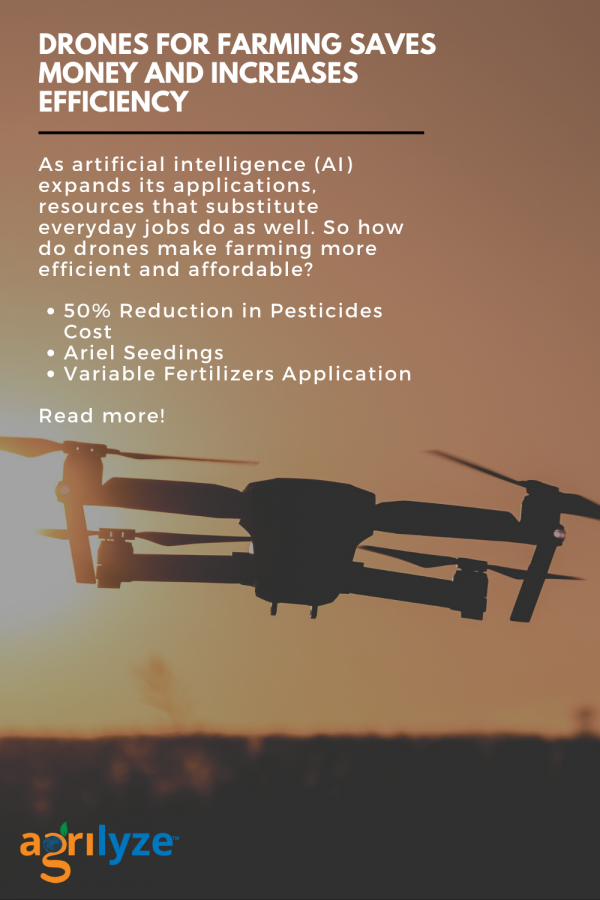How Can Drones Save Farms Money & Increase Efficiencies?
Drones for farming comes with great benefits. As artificial intelligence (AI) expands its applications, resources that substitute everyday jobs do as well. As an example, automated drone sensors can save a grower the tedious task of inspecting each plant exclusively, thus farmers can focus on ways to enhance growth and crop yields, saving energy on expenditures. Using drones for farming can also boost harvests, reducing the amount of time a grower needs to think about crop maximization. Overall, information technology plays a vital role in the successful management of any farm along with its system tools and software like sensors, GPS, robotics, and drones.
When precision agriculture practices are applied in the best interest of growers, agriculture drones become a valuable assistant, monitoring crops and soil data more efficiently than the traditional methods growers have become accustomed to using. Drones can quickly obtain statistics about crop health, soil moisture & texture, infestation of pests and diseases, crop maturity, and expected harvests. Then, based on the insights provided, growers can respond and deploy the same drone for remedial jobs. This article will examine how drones make operational activities more efficient and affordable for farms everywhere.
50% Reduction in Pesticides cost
One of the biggest companies in aerial technological innovation recently proved through successive field trials that there was a 50% reduction of pesticide usage on crops using precision control methodologies (spraying only the affected and diseased areas of the crops; avoiding random spraying). In the same trial, they found that precision drones can identify the occurrence of disease in patches, while deployed drones could spray the minimum amount of pesticides. This provided excellent results and more efficient operation. It also reduced the cost of using pesticides, saving time and increasing outputs as compared to the previous year when no drones were being used.
Aerial Seedings
Aerial seeding is a relatively new practice and is becoming more fruitful for growers amid climate change conditions. These conditions are altering crop seasons and shortening the length of seeding periods. For this purpose, the agriculture drone takes a short flight over a field that is ready for sowing and follows the provided instructions for plant to plant and row to row distances. This practice significantly reduces heavy costs associated with labour, fuel, and planters. Drones are able to perform quick sowing within a limited time frame. Moisture can be applied to foliage in serious drought-affected crops saving them from weather extremes, while pre-planting and post-planting herbicides are also used to increase efficiency and reduce costs associated with manual spraying.
Variable Fertilizers application
An agriculture drone is capable of advising on a variable fertilizer application rate. This assesses nutrient levels in standing crops or before crops are planted. The traditional application of fertilizer is uniform, across the field being planted for any crop. A drone survey can analyze the actual nutrients available in any soil sample and provide advice based on readily available nutrients – if fertilizer is needed or not, where fertilizer is needed and what the actual needs of that particular crop are. These precise recommendations can save on fertilizer costs and other cropping inputs in farming. Drone technology is a phenomenal innovation that continues to have far-reaching effects across today’s society, transforming our lives and the way we do business. The agricultural industry seems to have embraced drone technology with open arms, using these advanced tools to transform conventional farming methods.



